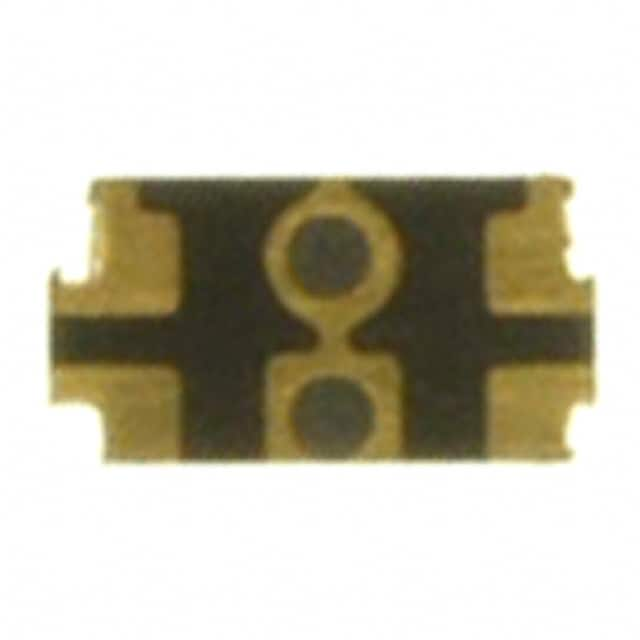GP2S60B Encyclopedia Entry
Introduction
The GP2S60B is a key component in the field of electronic devices, specifically belonging to the category of optoelectronic sensors. This entry will provide an overview of its basic information, specifications, detailed pin configuration, functional features, advantages and disadvantages, working principles, detailed application field plans, and alternative models.
Basic Information Overview
- Category: Optoelectronic sensor
- Use: The GP2S60B is commonly used for detecting the presence or absence of an object by utilizing an infrared emitting diode and a phototransistor.
- Characteristics: It is characterized by its compact size, high sensitivity, and low power consumption.
- Package: The GP2S60B is typically available in a small, surface-mount package.
- Essence: Its essence lies in its ability to accurately detect objects without physical contact.
- Packaging/Quantity: It is usually supplied in reels containing a specific quantity per reel.
Specifications
- Operating Wavelength: 950 nm
- Supply Voltage: 4.5 V to 16 V
- Output Current: 50 mA
- Rise Time: 3 µs
- Fall Time: 1 µs
- Operating Temperature Range: -25°C to 85°C
Detailed Pin Configuration
The GP2S60B typically consists of four pins: 1. Anode of Infrared Emitting Diode (IRED) 2. Cathode of IRED 3. Collector of Phototransistor 4. Emitter of Phototransistor
Functional Features
- High Sensitivity: The GP2S60B exhibits high sensitivity, allowing it to detect even subtle changes in the presence of an object.
- Compact Design: Its compact design enables easy integration into various electronic devices and applications.
- Low Power Consumption: With low power requirements, it is suitable for battery-operated devices.
Advantages and Disadvantages
Advantages
- Accurate object detection
- Compact size
- Low power consumption
Disadvantages
- Limited range of detection
- Susceptible to ambient light interference
Working Principles
The GP2S60B operates based on the principle of modulated infrared light. When an object is present, it obstructs the path of the emitted infrared light, causing a change in the phototransistor's conductivity, which is then converted into a corresponding electrical signal.
Detailed Application Field Plans
The GP2S60B finds extensive use in various applications, including but not limited to: - Object detection in automated machinery - Proximity sensing in consumer electronics - Position sensing in robotics - Reflective sensors in printers and copiers
Detailed and Complete Alternative Models
Several alternative models to the GP2S60B include: - GP2S700HCP - GP2S40 - GP2S27
In conclusion, the GP2S60B serves as a crucial component in the realm of optoelectronic sensors, offering high sensitivity and compact design. Its applications span across diverse industries, making it a versatile choice for object detection and proximity sensing needs.
Word Count: 443
Lista 10 Vanliga frågor och svar relaterade till tillämpningen av GP2S60B i tekniska lösningar
What is the GP2S60B sensor used for?
- The GP2S60B sensor is commonly used for detecting the presence or absence of an object, typically in applications such as automated machinery, robotics, and industrial equipment.
What is the operating voltage range of the GP2S60B sensor?
- The operating voltage range of the GP2S60B sensor is typically between 4.5V to 16V.
How does the GP2S60B sensor detect objects?
- The GP2S60B sensor uses an infrared LED and a phototransistor to detect the presence or absence of an object based on the reflection of the emitted infrared light.
What is the typical response time of the GP2S60B sensor?
- The typical response time of the GP2S60B sensor is around 0.5 milliseconds.
Can the GP2S60B sensor be used for proximity sensing?
- Yes, the GP2S60B sensor can be used for proximity sensing within its specified range.
What is the recommended operating temperature range for the GP2S60B sensor?
- The recommended operating temperature range for the GP2S60B sensor is usually between -25°C to 85°C.
Is the GP2S60B sensor suitable for use in outdoor environments?
- The GP2S60B sensor is primarily designed for indoor use and may not be suitable for prolonged exposure to outdoor conditions.
What is the typical output of the GP2S60B sensor?
- The GP2S60B sensor typically provides a digital output signal, making it compatible with microcontrollers and digital logic circuits.
Can the GP2S60B sensor distinguish between different types of objects?
- The GP2S60B sensor is primarily designed to detect the presence or absence of objects and may not have the capability to distinguish between different types of objects.
Are there any special considerations for integrating the GP2S60B sensor into a technical solution?
- When integrating the GP2S60B sensor, it's important to consider ambient light interference, proper calibration, and the specific application requirements to ensure optimal performance.


